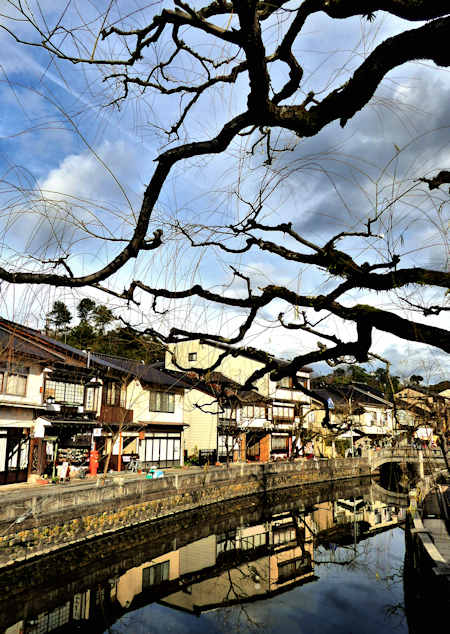Sakura-yu is a public hot spring in the town of Yamaga, a little north of Kumamoto City. It was originally built as a teahouse for the local Hosokawa lord about 380 years ago, but in 1868 was turned into a public hot spring.
Yamaga lies on the banks of the Kikuchi River. The fertile river basin has been a major rice-growing region since ancient times and Yamaga grew as a merchant town with the trade of rice which was shipped downriver to market. There are several hot spring hotels and guesthouses along the bank of the river.
The most famous festival in Yamaga is the lantern Festival where women dance with paper lanterns on their heads. These are not the usual simple lanterns you see at festivals and outside businesses but look like the ornate, metal lanterns you see at temples and such. The surprising thing is they are made of paper.
As I mostly explore Japan on foot I am always pleased to find the free foot-baths at many hot spring towns. The one in Yamaga was perhaps the nicest I have seen,
The paper lanterns, as well as umbrellas, are a major art of the town. At the main shrine in the town there is a museum about the lanterns and the festival, and in town there is also a "Folk" museum devoted to them.
The town is one of the many small towns scattered around Japan that use the nickname "Little Kyoto", but in my opinion, it is not apt as the inhabitants were friendly and unpretentious. As well as the trade on the river the town also lies on the main road that connected Kumamoto with Kokura, and plenty of traditional architecture remains.
The town's charm is I think aided by the fact that Yamaga is not on a rail line so is a little harder to visit than the most popular places. More details can be found in my related posts on
Kongoji Temple, the most interesting temple in the town and one sire said to be the origin of the lantern festival, the
Yachiyo0za Kabuki Theatre, a huge traditional theatre open to the public,
Omiya Shrine, another site claiming the origin of the lantern festival, and the
Buzen Kaido, the old thoroughfare lined with traditional architecture.









































